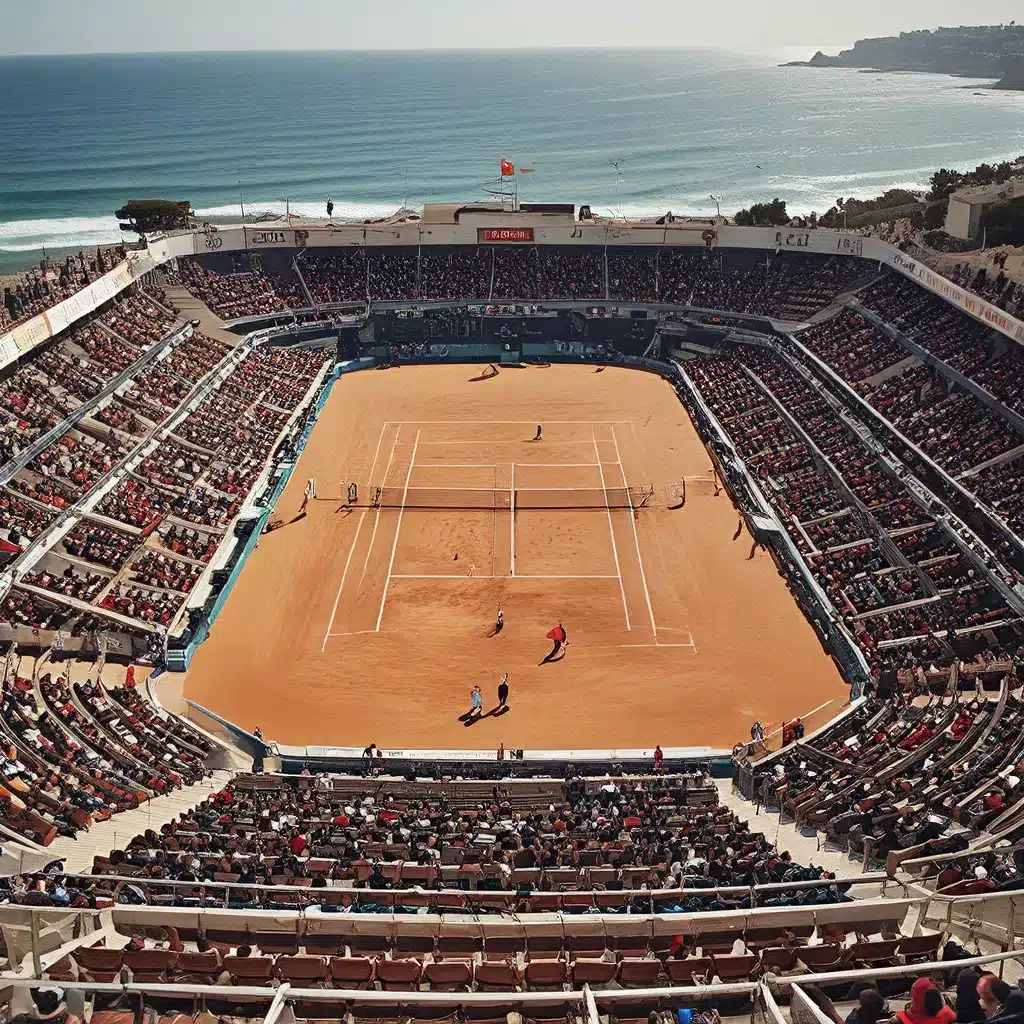
Nestled along the stunning Portuguese Riviera, the Estoril Open has long been a beloved fixture in the world of professional tennis. However, the tournament’s true allure lies not just in the thrilling matches it hosts, but in the captivating history and architectural grandeur of its venue – the Estoril Court Central. In this comprehensive article, we will delve into the rich tapestry of this iconic stadium, uncovering its storied past, its modern transformation, and the unique charm that has made it a must-visit destination for tennis enthusiasts and casual travelers alike.
The Estoril Court Central: A Storied Venue
The Estoril Court Central has its roots firmly planted in the early 20th century, having first opened its doors in 1930. The stadium’s design was the brainchild of renowned Portuguese architect José Crisóstomo, who sought to create a tennis venue that would seamlessly blend with the picturesque seaside setting of Estoril. The result was a masterpiece of Art Deco architecture, a style that was gaining popularity across Europe at the time.
The Estoril Court Central stood as a testament to the region’s growing reputation as a premier vacation destination, attracting a discerning international clientele with its elegant grandstands, manicured clay courts, and stunning ocean views. In the decades that followed, the stadium would host some of the most thrilling tennis matches in the history of the sport, cementing its place as a beloved landmark in the heart of the Portuguese Riviera.
The Estoril Open: A Tournament Steeped in History
The Estoril Open has a long and storied history that is inextricably linked to the Estoril Court Central. The tournament first debuted in 1990, quickly establishing itself as a must-attend event on the ATP Tour calendar. Over the years, the Estoril Open has played host to an array of tennis legends, from the likes of Roger Federer and Rafael Nadal to Novak Djokovic and Andy Murray.
The tournament’s prestige and popularity have only grown over time, with the Estoril Court Central playing a crucial role in its success. The stadium’s intimate atmosphere, combined with its stunning coastal backdrop, have made it a favorite among players and spectators alike. The tournament’s signature clay courts have also become a beloved feature, providing a unique challenge for the world’s best clay-court specialists.
Architectural Marvels and Modern Renovations
The Estoril Court Central is not only a hub of tennis history, but also a true architectural gem. The stadium’s Art Deco design, with its clean lines, symmetrical facades, and intricate detailing, has earned it a reputation as one of the most visually striking tennis venues in the world. The building’s distinctive yellow and blue color scheme is a nod to the region’s vibrant coastal palette, seamlessly blending the structure with its natural surroundings.
Over the years, the Estoril Court Central has undergone a series of renovations and expansions, ensuring that it remains a world-class facility while preserving its historic charm. In the early 2000s, the stadium underwent a major modernization project, which saw the addition of new grandstands, improved amenities, and state-of-the-art technology to enhance the spectator experience.
Despite these updates, the Estoril Court Central has managed to maintain its timeless appeal, with its Art Deco features and stunning ocean vistas remaining the primary draws for visitors. The stadium’s careful preservation and restoration efforts have earned it a place among the most iconic and well-preserved tennis venues in the world.
A Destination for Tennis and Beyond
The Estoril Court Central’s allure extends far beyond the realm of professional tennis. The stadium and its surrounding area have become a beloved destination for travelers seeking to immerse themselves in the rich cultural and natural beauty of the Portuguese Riviera.
The picturesque town of Estoril, with its charming promenades, elegant hotels, and bustling cafes, has long been a favorite among the European elite. Visitors to the Estoril Court Central can easily explore the town’s historic landmarks, such as the Estoril Casino, the largest casino in Europe, or the stunning Estoril Coastal Walk, which offers breathtaking views of the Atlantic Ocean.
Beyond the tennis court, the Estoril Court Central itself has become a hub for cultural events and community gatherings. The stadium’s grand indoor and outdoor spaces are frequently used for art exhibitions, music performances, and other cultural celebrations, further cementing its status as a beloved landmark in the region.
Preserving the Legacy of the Estoril Court Central
As the Estoril Open continues to captivate tennis fans and the Estoril Court Central remains a cherished destination for travelers, the preservation of this historic venue has become a matter of great importance. The Old Stadium Journey team, along with local preservation organizations, have been working tirelessly to ensure that the Estoril Court Central’s architectural and cultural heritage is safeguarded for future generations.
Through ongoing restoration projects, educational initiatives, and public awareness campaigns, these efforts aim to not only preserve the physical structure of the stadium but also to celebrate the rich history and community that has thrived within its walls. By highlighting the Estoril Court Central’s unique blend of sports, architecture, and cultural significance, these initiatives seek to inspire a deeper appreciation for the venue’s enduring legacy.
As the world of tennis continues to evolve and the Portuguese Riviera remains a premier travel destination, the Estoril Court Central stands as a timeless testament to the power of preserving our shared history. This iconic stadium, with its captivating past, modern renovations, and enduring appeal, will undoubtedly continue to captivate audiences for generations to come.

